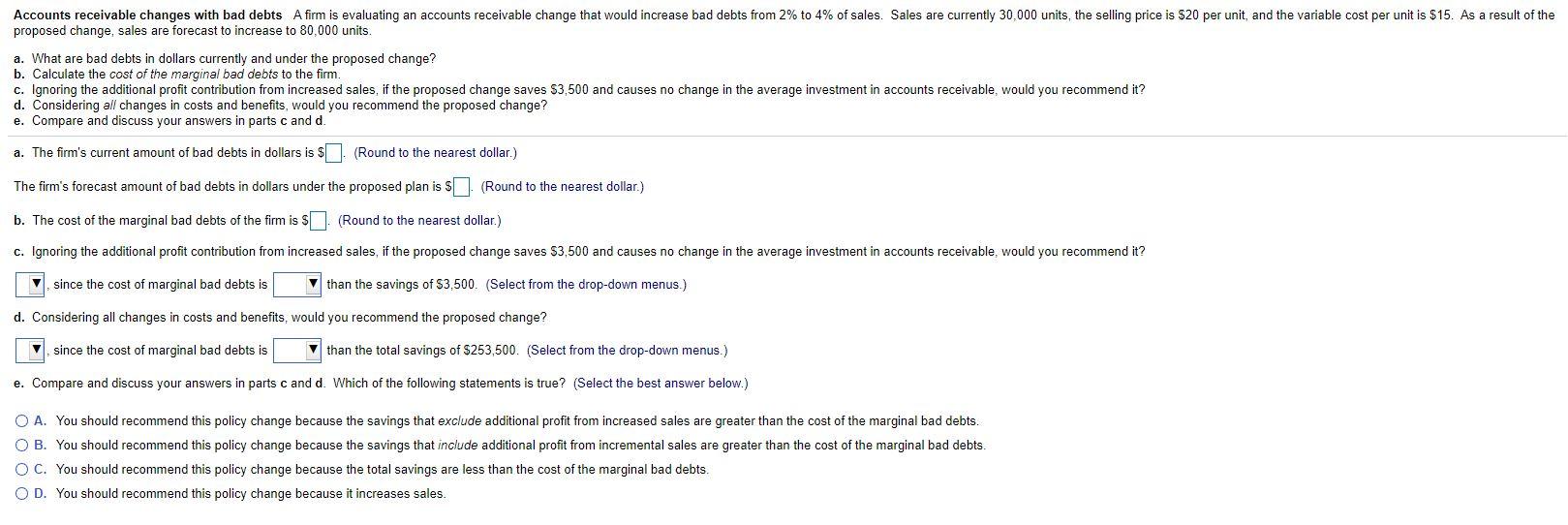
Accounts receivable changes with bad debts A firm is evaluating an accounts receivable change that would increase bad debts from 2% to 4% of sales. Sales are currently 30,000 units, the selling price is $20 per unit, and the variable cost per unit is $15. As a result of the proposed change, sales are forecast to increase to 80,000 units. a. What are bad debts in dollars currently and under the proposed change? b. Calculate the cost of the marginal bad debts to the firm. c. Ignoring the additional profit contribution from increased sales, if the proposed change saves $3,500 and causes no change in the average investment in accounts receivable, would you recommend it? d. Considering all changes in costs and benefits, would you recommend the proposed change? e. Compare and discuss your answers in parts c and d. a. The firm's current amount of bad debts in dollars is $ (Round to the nearest dollar.) The firm's forecast amount of bad debts in dollars under the proposed plan is $ (Round to the nearest dollar.) b. The cost of the marginal bad debts of the firm is $. (Round to the nearest dollar.) c. Ignoring the additional profit contribution from increased sales, if the proposed change saves $3,500 and causes no change in the average investment in accounts receivable, would you recommend it? since the cost of marginal bad debts is than the savings of $3,500. (Select from the drop-down menus.) d. Considering all changes in costs and benefits, would you recommend the proposed change? V since the cost of marginal bad debts is W than the total savings of $253,500. (Select from the drop-down menus.) e. Compare and discuss your answers in parts c and d. Which of the following statements is true? (Select the best answer below.) O A. You should recommend this policy change because the savings that exclude additional profit from increased sales are greater than the cost of the marginal bad debts. OB. You should recommend this policy change because the savings that include additional profit from incremental sales are greater than the cost of the marginal bad debts. OC. You should recommend this policy change because the total savings are less than the cost of the marginal bad debts. OD. You should recommend this policy change because increases sales







